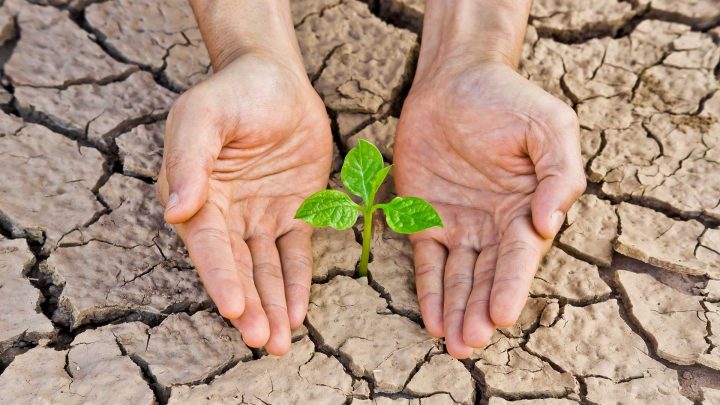Climate change once seemed like something for future generations to worry about. But now it affects our everyday lives. We've already seen its impact with wildfires, hurricanes and unusual temperature spikes. We’re also used to higher energy costs. But for most people, the next resource to hit your homeowner budget will be water shortages.

After years of drought, the U.S. Government announced water rationing for several western states. Currently affecting agricultural communities served by the Colorado River, these water shortages are just the start. Like energy, fresh water is not an unlimited resource. Climate change means this issue will come to a head sooner than most of us expected.
Water Shortages are Changing Our Lives
As a homeowner you need to become water-aware. This means understanding your water usage today and how it will change in the next five or ten years. Planning now for tomorrow's water shortages will save you money now and stress later when community shortages lead to homeowner water rationing.
The government knew this day was coming for years. That’s why they created the WaterSense program in 2006. Like EnergyStar, it was designed to motivate manufacturers and consumers to reduce the amount of water used in our homes.
As a homeowner, there are four steps you can start taking to save water: water-efficient appliances, WaterSense bathrooms, water-aware landscaping … and please, fix water leaks around your home as quickly as you can.

Water-Efficient Appliances
Many washing machines today are highly water-efficient. Samsung, for example, manufactures a washer with a smart process called Optiwash* that weighs your clothes and determines the right amount of water and soap to use to get the clothes clean. All-in-all, this and other newer washing machines are well worth the additional investment.
High-efficiency dishwashers use 6 – 10 gallons of water per load and some use less than 4 gallons. This compares with a standard dishwasher that uses as much as 9 – 12 gallons per load or 20 gallons if you hand-wash.
Some dishwashers don’t require pre-rinsing dishes, which saves even more water as well as your time. Along with the EnergyStar rating when you buy a new appliance, be sure to discover its water usage pattern to ensure that you make a water-efficient choice … and delay future water shortages.

WaterSense Bathrooms
Toilets are the biggest water users in your home (check out Indoor Water Use in Your Home), accounting for roughly one-quarter of your home’s indoor water use. Changing to low-flow toilets (look for the WaterSense label) can permanently reduce your water consumption by almost 13,000 gallons. The EPA estimates the savings would amount to $2,000 over the life of each toilet, which makes the cost of replacing your current toilets with low-flow choices negligible.
WaterSense showerheads must use no more than 2 gallons of water per minute while still meeting performance standards that are equal to or better than standard showerheads. One WaterSense showerhead can save 2,700 gallons of water a year or more. While we might not be able to avoid future water shortages, we can certainly delay them by taking showers rather than baths, ones that are shorter and use less water.
And don't forget about the faucets in your bathroom (kitchen too). A WaterSense faucet must have a flow of no more than 1.5 gallons per minute (gpm). They must also have no less than 0.8 gmp at 20 psi of water pressure to insure there's adequate flow for hand washing.

Water-Aware Landscaping
There are two aspects to water-aware landscaping: plant choice and WaterSense irrigation. Desert states such as Arizona have developed water-aware landscaping into an artform they call xeriscaping. Homes use gravel in their yards instead of lawns. Underground irrigation systems use drip irrigation, which is the most efficient way to water trees and plants. Cactus, succulents and other native desert plants allow many desert dwellers to not irrigate their properties at all, while still having a lovely landscape around their home.
Choosing trees and plants that will do well in your climate and with the rainfall in your area helps keep your landscape verdant without the need for additional water. With the greater variation in temperatures due to climate change, look for more heat and drought-tolerant choices when making long-term additions.
If you decide to install an irrigation system, consider one with a WaterSense certified irrigation controller. There are two kinds of irrigation controllers that are certified by WaterSense. Soil moisture-based irrigation controllers and weather-based irrigation controllers. Some controllers use a combination of the two methods and those should be certified twice – once for each approach. Both controllers allow you to use water based on the needs of your yard rather waste it by operating on a clock-based schedule.

Save Water Starting Today
Start with simple things you can do today. Don't let the bathroom faucet run while you’re brushing your teeth. Wait to run your dishwasher or washing machine with a full load. If everyone does this, we'll delay the coming water shortages. Your water bill will come down a little and you'll feel good knowing you're learning to treat water like the precious resource it is.
PS For more tips on saving water and the environment, check out 100 Ways to Save the Environment & Enhance Your Home.










Leave a Reply